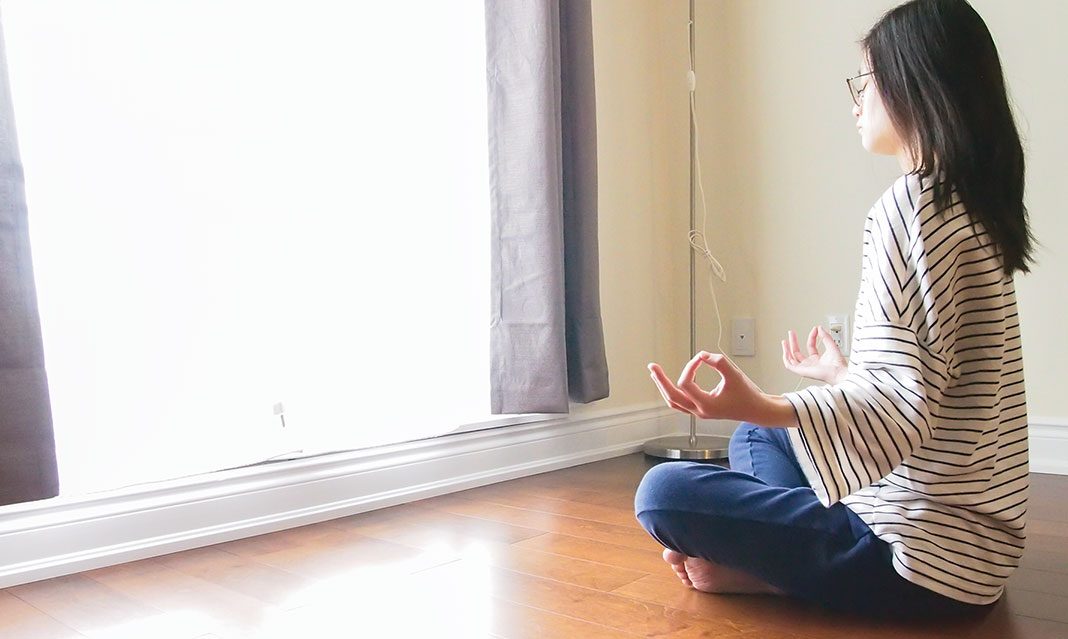As the end of the semester approaches, anxiety tends to rise. Reflecting on the past and considering the future can turn into a constant influx of worried thoughts. Although certain thoughts left on autopilot can help us save time, others distract us from the present and are not in any way constructive.
The outcome of a given situation is dependent on the attitude with which it is approached. The practice of mindfulness meditation allows an individual to alter the way they respond to a situation by creating space between themselves and their reactions.
Many versions of meditations exist, but mindfulness meditation involves bringing one’s awareness to the present moment with a point-of-focus, such as one’s breath. Whenever a thought comes into the mind, it is observed without judgement. Rather than attempting to control thoughts, attention is simply brought back to the point-of-focus.
Students can benefit from mindfulness meditation in a variety of ways.
A Harvard study conducted in 2011 found that after eight weeks of mindfulness-based stress reduction training, participants had physical changes occur in their brain.
Participants had a decrease in the brain cell volume of the amygdala— a region of the brain which regulates the “fight-or-flight” response. This shows an increase in the ability to cope with stress, fear, and anxiety. Instead of being controlled by the situation, individuals are better at viewing it objectively which allows for problem-solving rather than useless worry.
The study also found an increase in the cortical thickness of the hippocampus—a part of the brain involved in learning and memory.
In 2009, Moore and Malinowski found that a group of experienced mindfulness meditators had a significantly stronger ability to focus their attention and avoid being distracted by irrelevant information.
A 2013 study lead by Mrazek et al. found that after a mere two weeks of meditation training, participants writing the verbal reasoning section of the GRE had better focus and memory, which resulted in a score that was higher by the equivalent of 16 percentile points.
The support of mindfulness meditation is so abundant in research that many companies, such as Apple and Google, are incorporating it to reduce stress and improve the productivity of their employees.
Mindfulness meditation is simple, but not easy. Though people can benefit even after only one session, significant but important changes occur with time. Therefore, the more consistently mindfulness meditation is practiced, the more significant of a change it creates.
Getting started in mindfulness meditation may seem like a challenge to beginners and even individuals who are familiar with it. Every week, UTM’s Health and Counselling Centre offers the opportunity for a free drop-in mindfulness meditation course.
The focus of each session differs and each one is guided by a different member of the health and counselling staff on rotation. Students can choose to sit on a mat, a chair, or lie down. Last week, students were guided through a meditation in which they would take deep breaths and focus on bringing awareness to various parts of their body, one at a time.
Throughout the calming experience, students were often reminded to observe any thoughts and to bring awareness back to the point-of-focus without judgement. They were encouraged to feel any emotions they came across and feel any tension found in their body.
The last 10 minutes of the session are left for students to slowly come back from their meditation to have enough time to travel to their next class, or ask any questions they may have.
Attending a guided meditation serves to help start integrating mindfulness into one’s daily routine. It is easy to become discouraged when thoughts keep re-entering the mind. Since distraction occurs more often for novice meditators, guidance can keep individuals from being discouraged and quitting before reaping any benefits.



